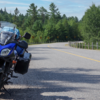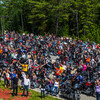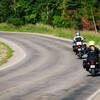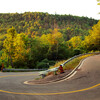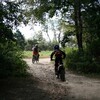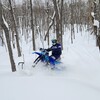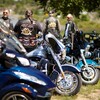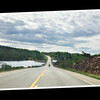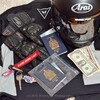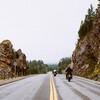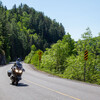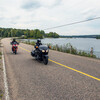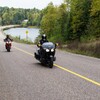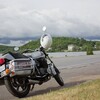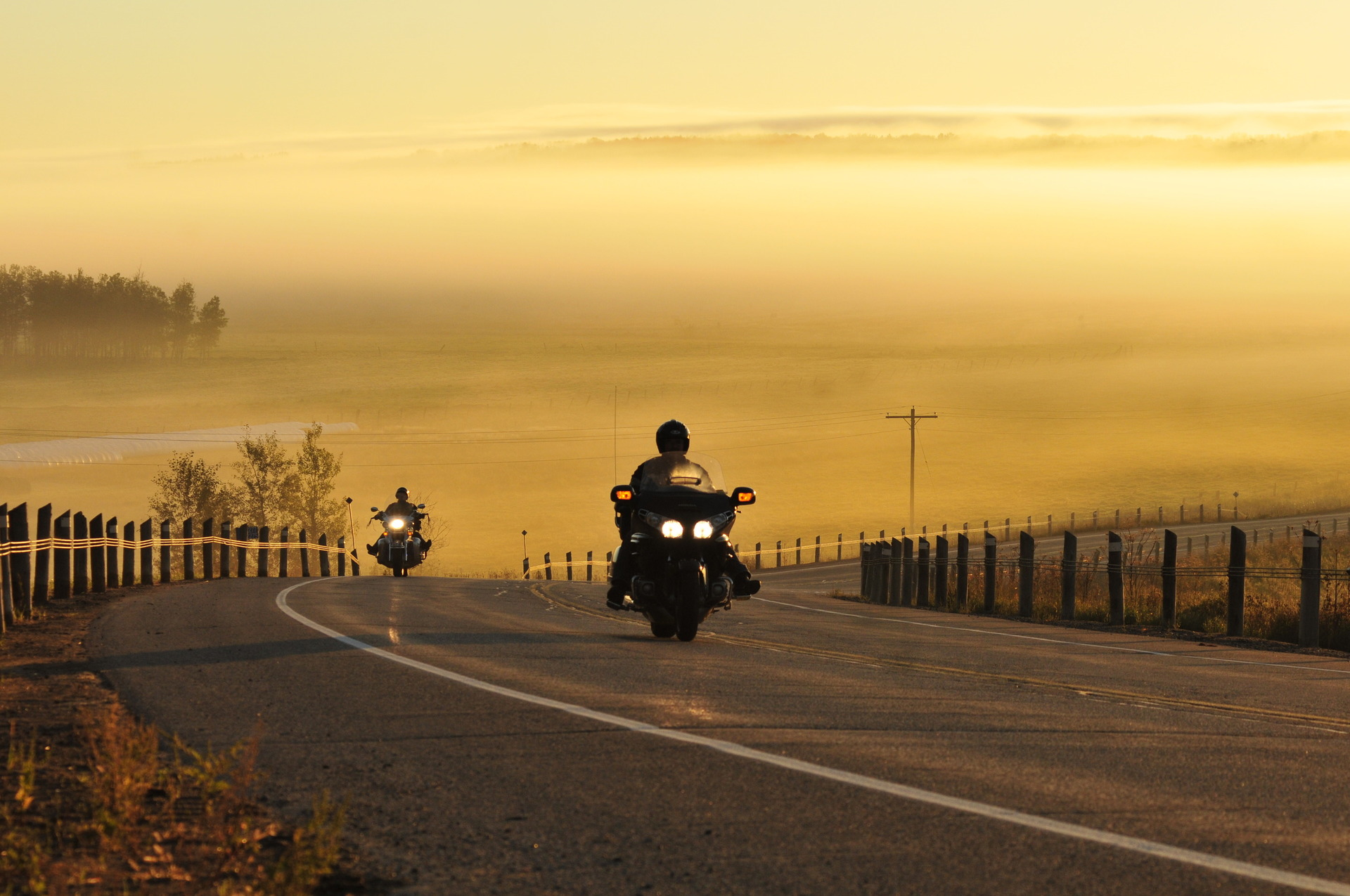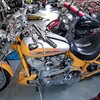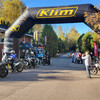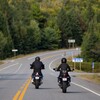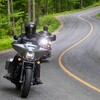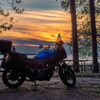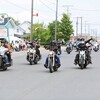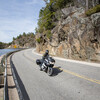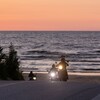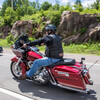

Here's Why Every Rider Needs to Hit Up Historic Highway 2—Canada's OG Highway
It was a cool morning in early autumn and the trees were just starting to show hints of colour. We left Montreal and took the highway out to South Lancaster, where we gassed up and picked up Highway 2, the road that would take us all the way into Kingston. Our destination was the original milestone of the original highway of Canada. Along the way, we planned to stop at many of the historical landmarks that line the Saint Lawrence River and Lake Ontario in a journey back in time to the heart of Upper Canada.
Stop 1: Learn About the Villages at the Bottom of the St. Lawrence Seaway
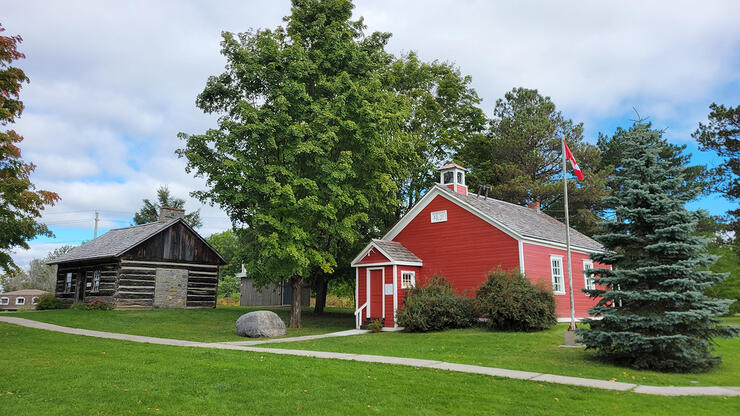
Our first stop was at the Lost Villages Museum west of Cornwall in Long Sault. In the 1950s, the building of the St. Lawrence Seaway required the flooding of some 20,000 acres of shoreline between Iroquois and Cornwall. In what must have been a controversial decision at the time, several villages that date back to Loyalist settlements were “relocated” to the new communities of Ingleside and Long Sault. What couldn’t be moved was left to be flooded when the inundation began on July 1, 1958, and remains to this day at the bottom of the seaway, making the area a popular spot for scuba diving. The Lost Villages Museum contains several reconstructed buildings from those villages, including the general store, church, and schoolhouse.
Ride Ontario's Florida Keys
The upside is that the Long Sault Parkway was created, considered one of the most scenic roads in Ontario. This 11-kilometre stretch connects several islands that were the original hilltops surrounding the farmland that was flooded. When on the Parkway, you are surrounded by water, and The Globe and Mail has referred to it as a sort of “Florida Keys but on a smaller scale.” There are many opportunities to pull off and enjoy the views, beaches, and parkland. The Long Sault Parkway is short and sweet, but definitely worth the short detour; it is U-shaped, so brings you back to Highway 2.
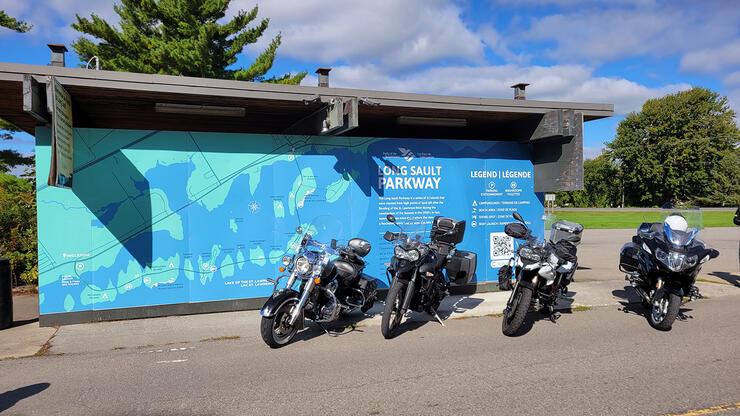
Visit a British Battleground and See the Lighthouse
We continued westward, and about two kilometers east of Prescott, we turned onto Windmill Road and arrived at Windmill Point, the location of a bloody rebellion known as The Battle of the Windmill. In November of 1838, about 200 Americans, sympathetic with reformers in the British colony, crossed the river and took up position in the windmill, which proved to be a strategic structure and location. However, the support of locals disenchanted with British rule did not materialize, and the rebels soon began to run out of food and ammunition. Approximately 1,000 British troops were dispatched from the nearby Fort Wellington and the resurrection was over within four days. In 1873, the windmill was converted to a lighthouse which stands today. It’s a nice place to stretch your legs and read the historical signs that mark the area.
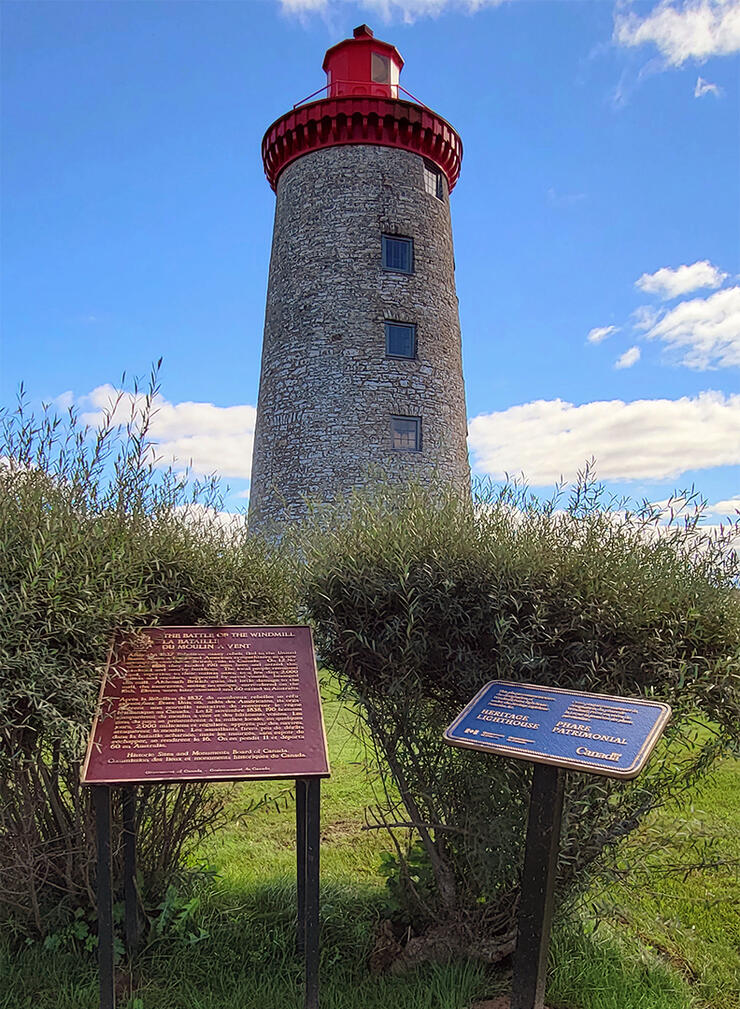
Check Out Fort Wellington
Our next stop was Fort Wellington in Prescott, built during the War of 1812. On the day of our ride, it was an unseasonably chilly 12C, and we were happy to warm up a little in the lobby and use the washrooms. With paid admission, you can view the wreck of an 1812-era gunboat pulled from the river and witness other period activities. We didn’t have time for that, but it was interesting to walk the perimeter and study the exterior fortifications.
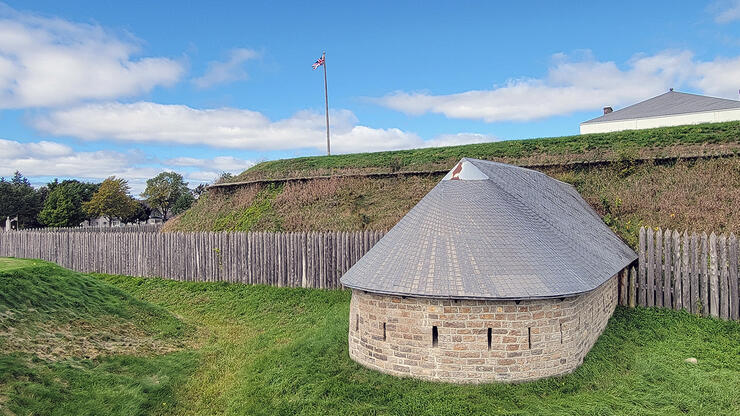
The village of Prescott is charming, with several restaurants and cafes. We stopped at Katarina’s Coffee Shop for a coffee and snack. The pastries are to die for, but they offer full breakfast and lunch menus as well. There’s plenty of parking, and a patio outside or seating inside. It was a nice pause about halfway to our destination.
Pause and Reflect at the Historic Blue Church
Shortly after leaving Prescott, we stopped at The Blue Church. You can’t really miss it. The church dates back to 1790, but it, and another built in 1809, were destroyed by fire. The third, built in 1845, proved lucky and remains to this day. The surrounding cemetery of course was unaffected by fire and is one of the oldest in Ontario. Barbara Heck, founder of the Methodist Church, is among the buried there. We tried the door and to our surprise it was open, so we stepped inside to enjoy the stained glass, moment of reflection, and warmth.
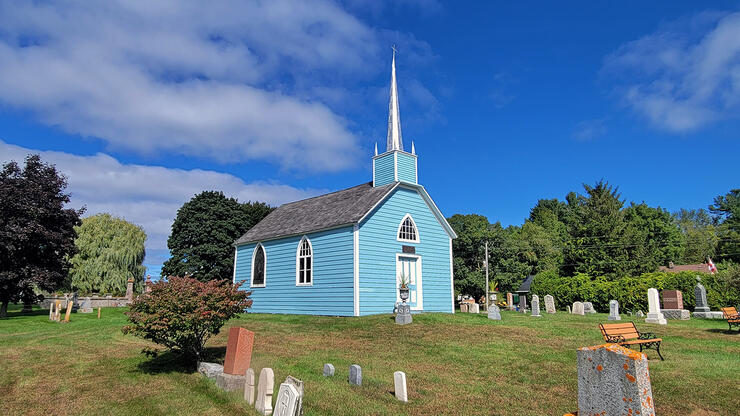
It's Tunnel Time
Just twenty minutes further along Highway 2 is Brockville, named after the British General whose innovative tactics were instrumental in fending off the invading Americans. There is parking down at the marina, and you can walk the first train tunnel of Canada. The tracks have been removed and lighting installed, which changes as you venture deeper into the tunnel and presents impressive displays. Look for the sections of the roof that once served as chimneys for the train smoke.
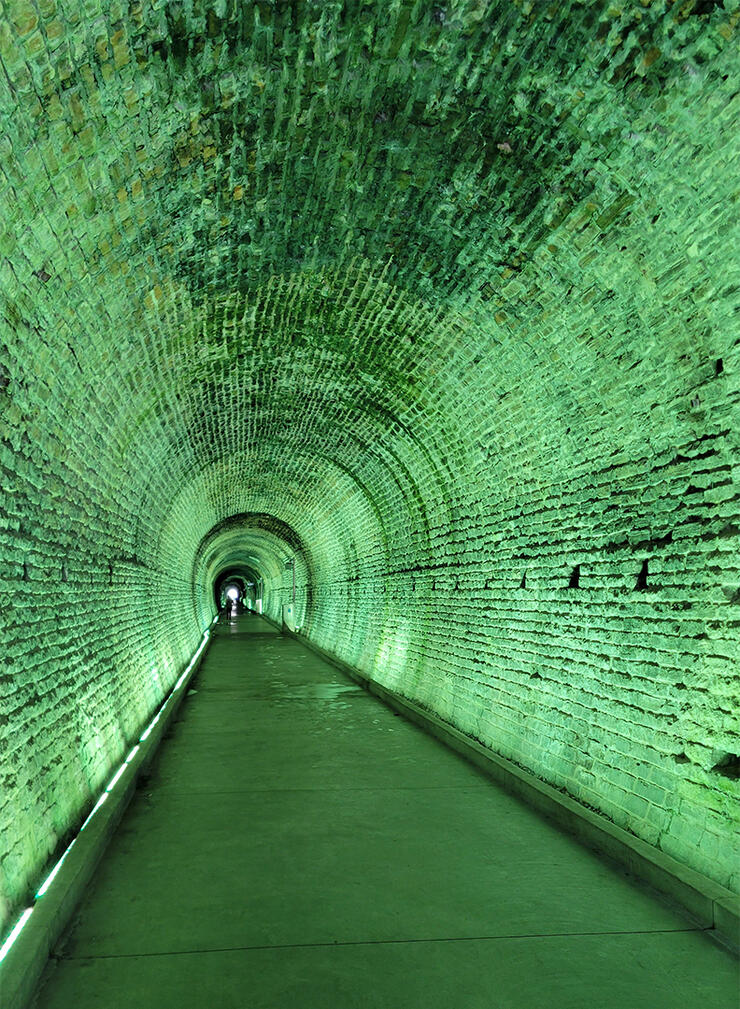
A Stop for Aviation Buffs
If aviation history is more your thing, be sure also to walk out to Blockhouse Island just across from the marina. There you will see a Golden Hawk Sabre Jet, the dominant fighter jet aircraft of the 1950s and used by the RCAF Golden Hawks aerobatic team from 1959 to 1964 before the team switched to CT-114 Tutors and became The Snowbirds. The park contains public washrooms and is a nice place for a picnic, and if you happen to be there toward the end of June, you might be lucky to catch the Tall Ships Festival.
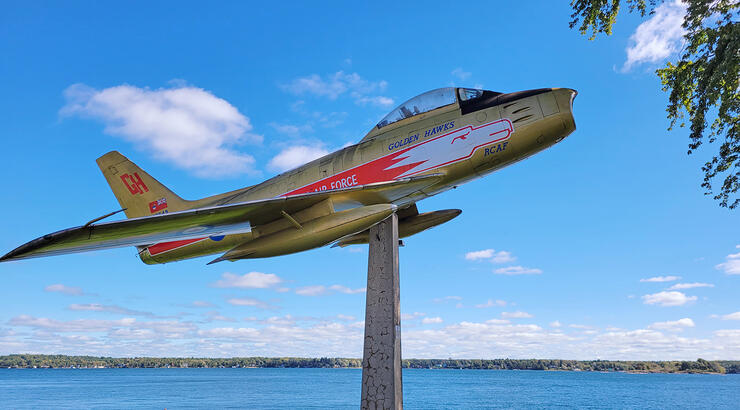
Cruise the 1000 Islands Parkway
Now it was time to put some miles behind us so we continued on our journey westward. Shortly after leaving Brockville, we made the second detour from Highway 2, this time onto the 1000 Islands Parkway that hugs the shoreline of the St. Lawrence River. Unlike the Long Sault Parkway that has a speed limit of 55 km/h, the 1000 Islands Parkway won’t slow you down and offers spectacular views of the river and the spectacular homes that line it. My personal favourite is the “cottage” on an island adjoined by an arch footbridge. The trees were just starting to turn colour but the area lights up in the autumn when the Parkway is not to be missed. It brings you into Gananoque, where you reconnect with Highway 2 at the last remaining section that is officially Highway 2. When the highway was decommissioned in 1998, most of it was renamed County Road 2 (CR2) with other sections going by local names such as Lakeshore Boulevard and Kingston Road, but a 1-kilometre section just east of Gananoque was kept Highway 2 as a symbolic token of the former important highway.
Experience the Kingston Sights
We were now entering Kingston—The King’s Town—after whom the highway was named, and our ride took a turn into some darker history with a tour of The Kingston Penitentiary, Canada’s oldest maximum security jail. For a little over $20, you can go on a 45-minute guided tour of the North Gate, a cell block, the canteen, gymnasium and other sections of the jail. The tour guide also recounts the history of the infamous riot of 1971 and shows visitors where and how it occurred.
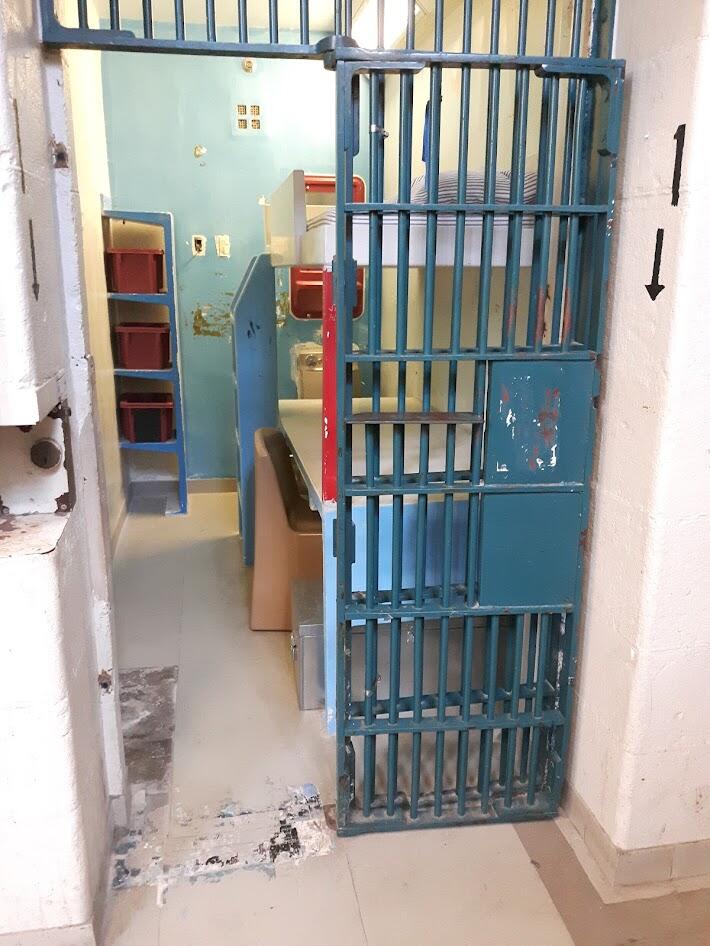
Finish the Tour at the Original Milestone Marker for Canada's First Highway
After the tour, there was one more historic landmark we wanted to see. We continued west out of the city centre on Highway 2, now named Princess Street, to the western edge of the city. We passed fast food restaurants, hotels, businesses, and on the nondescript northeast corner of Highway 2 and Cataraqui Woods Drive, on the front lawn of a private home, we found our planned destination—the original milestone of the historic highway.
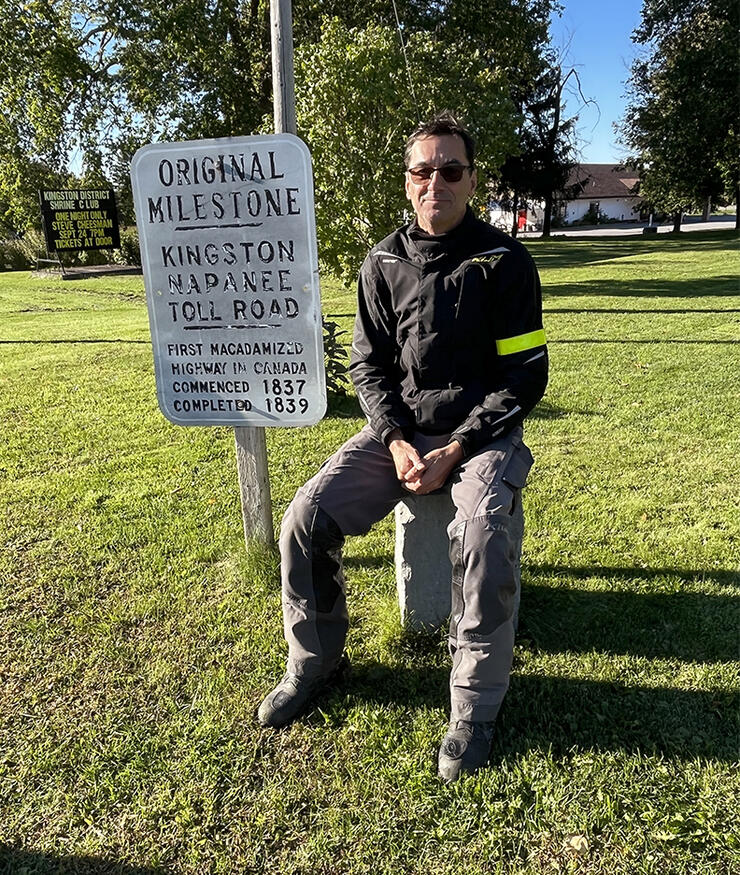
So Many Reasons to Plan your Motorcycle Ride on Highway 2
Highway 2 has a lot to offer history buffs, but it’s also just a very pleasant, easy, ride along the shoreline, passing through quaint Loyalist towns along the way. These towns have done an excellent job of preserving much of the original architecture of the buildings and residences and protecting the old-growth trees that are especially impressive in the autumn. There are plenty of spots to pull off for a bite, a coffee, or fuel, and the parkways bring you even closer to the water. Americans can easily access the highway from the international bridges at Massena, Ogdensburg, or 1000 Islands. It’s no wonder that this historic highway is so popular among bikers. If you’ve somehow managed so far to miss this gem, take advantage of the fall season to discover it and a part of Canadian history.
Recommended Articles

Bucket List Motorcycling in Ontario, Canada 2026

Ontario's Best Twisties: Five Roads to Get Your Lean On

The Big Belly Tour—A Complete List of Ontario's BBQ Joints

It's Bike Night in Ontario 2024

Ontario's Top Twisties
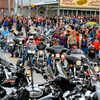
23 Amazing Photos That Prove PD13 Is Still The Best Motorcycle Event Ever
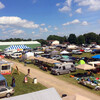
Motorcycle Swap Meets in Ontario—The Complete List for 2025

And a Vespa shall lead them all...
